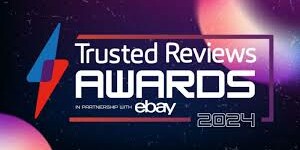Growth marketing is a dynamic, results-driven approach that focuses on expanding a company’s reach, increasing engagement, and driving sustainable growth. It’s not just about acquiring new customers; it’s about fostering long-term relationships and maximising lifetime value.
Communication tools such as PR, social media, influencer marketing, and digital marketing are essential components of a successful growth marketing strategy. When used in synergy, they can drive brand awareness, build credibility, and foster deep connections with your audience. By integrating these tools into a cohesive strategy, brands can not only achieve rapid growth but also sustain it by nurturing long-term customer relationships and engagement.
1. Public Relations (PR): Building Credibility and Awareness
PR plays a critical role in shaping public perception and establishing a brand’s credibility. It’s a strategic tool that goes beyond managing a company’s image, helping to create a narrative that resonates with target audiences.
- Brand Storytelling: PR helps communicate your brand story through media placements, press releases, and thought leadership articles. By sharing your company’s mission, values, and innovations, you can create a strong emotional connection with your audience, fostering loyalty and trust.
- Media Coverage: Securing features in reputable media outlets positions your brand as an industry leader. This not only boosts brand awareness but also validates your company’s credibility, which is essential for building consumer trust and attracting new customers.
- Crisis Management: Effective PR strategies can mitigate the impact of negative events, maintaining a positive brand image. Handling a crisis transparently can even turn challenging situations into opportunities for demonstrating your brand’s integrity and commitment to customer satisfaction.
2. Social Media: Engaging Audiences and Building Community
Social media platforms are powerful tools for engaging with customers, building communities, and amplifying your brand message. They provide a space where brands can interact directly with their audience, creating a more personal connection.
- Community Engagement: Social media allows brands to foster communities where users can share experiences, ask questions, and feel connected to the brand. Regular engagement through comments, direct messages, and interactive content like polls or live Q&As can strengthen customer relationships and encourage brand advocacy.
- Content Distribution: It’s an ideal platform for distributing various types of content, from educational blog posts and product updates to user-generated content and behind-the-scenes looks. This diversified content strategy can cater to different segments of your audience, enhancing engagement and driving traffic to your website or landing pages.
- Social Listening: Monitoring social media for brand mentions and customer feedback provides valuable insights into audience sentiment. This data can inform product development, customer service improvements, and marketing strategies, ensuring your growth tactics are aligned with customer needs and expectations.
3. Influencer Marketing: Expanding Reach Through Trusted Voices
Influencer marketing leverages the credibility and reach of social media personalities to promote products and services. Influencers have built trust with their followers, making their endorsements more impactful than traditional ads.
- Targeted Exposure: Influencers often have highly engaged followers in specific niches. Partnering with the right influencers enables brands to reach targeted audiences more effectively, enhancing brand awareness and credibility within those communities.
- Authentic Endorsements: Unlike traditional advertising, influencer promotions often feel more authentic and relatable. When influencers share their genuine experiences with your product, it resonates with their audience, fostering trust and influencing purchasing decisions.
- Content Collaboration: Influencers can create high-quality content that aligns with your brand’s message. This not only enriches your content library but also provides valuable assets for use in your own marketing channels, from social media to email campaigns.
4. Digital Marketing: Driving Measurable Growth
Digital marketing encompasses a wide array of strategies, from search engine optimisation (SEO) and content marketing to pay-per-click (PPC) advertising and email campaigns. It is instrumental in driving measurable, scalable growth.
- SEO and Content Marketing: High-quality, optimised content helps your website rank higher in search engine results, increasing visibility and attracting organic traffic. Educational and informative content establishes your brand as an authority in your field, which can lead to higher engagement and conversions.
- PPC and Retargeting: Paid advertising is a powerful tool for reaching new audiences and re-engaging those who have interacted with your brand before. PPC campaigns can be finely targeted based on demographics, behaviour, and even past interactions, ensuring your message reaches the right people at the right time.
- Email Marketing and Automation: Email remains one of the most effective channels for nurturing leads and driving conversions. Automated workflows can deliver personalised messages to guide prospects through the sales funnel, while segmented campaigns ensure the right content reaches the right audience, enhancing engagement and conversion rates.
Integrating Communication Tools for a Unified Growth Strategy
While each communication tool offers unique advantages, the real strength of a growth marketing strategy lies in integrating these tools effectively. Here’s how:
- Consistent Messaging: Ensure that your brand message is consistent across all channels. Whether you’re engaging with influencers, creating social media content, or sending out press releases, your brand’s voice and values should remain cohesive.
- Cross-Channel Campaigns: Coordinate campaigns across multiple channels for maximum impact. For example, a product launch could be supported by a PR campaign to secure media coverage, a social media campaign to engage your audience, and influencer partnerships to reach new customers.
- Data-Driven Adjustments: Use analytics and performance data from each channel to refine your strategy. If a particular social media campaign outperforms expectations, consider amplifying its reach through PR and influencer partnerships. Continuous optimization ensures your growth marketing efforts are as effective as possible.
PRAgency #TechPRAgency #TechnologyPRAgency #ConsumerElectronicsPRAgency #ConsumerPRAgency #GamingPRAgency #EdTech #Eduction #European PRAgency #EuropeanTechnologyPRAgency #SocialMediaAgency #InfluencerMarketingAgency #PressOffice #MediaRelations #LaunchEvents


